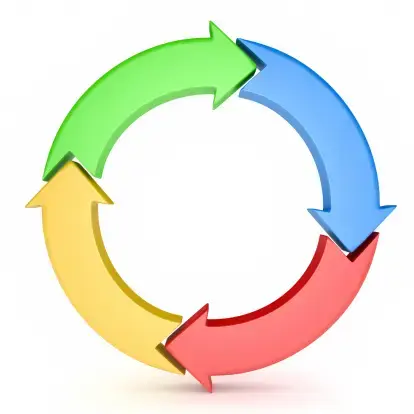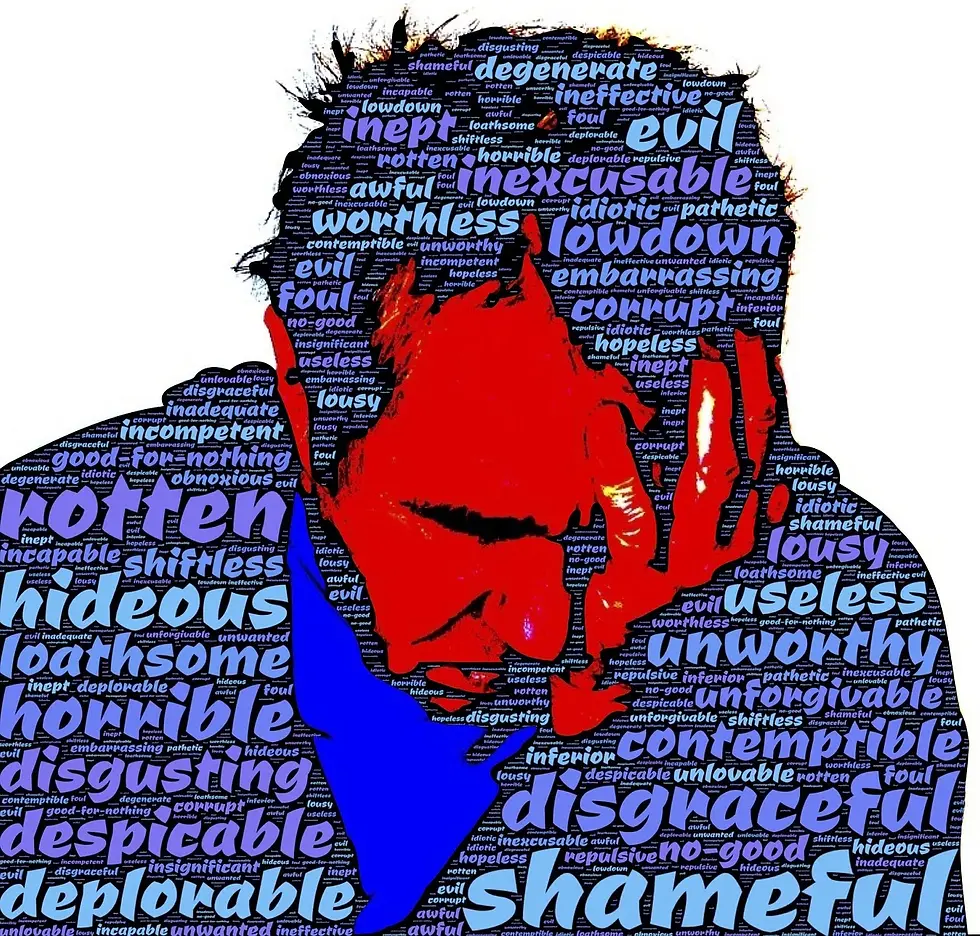

People living with chronic pain often compare their lives to a roller coaster, with good days where they feel somewhat in control, and then they have bad days where they feel helpless and their mood sinks. This is completely normal and there have actually been documented cycles concerning the emotional and behavioral changes that are especially noted with debilitating pain. Understanding these cycles and their predictable patterns may help you on your journey of understanding, to acceptance and finally to managing your condition.
Behavioral cycle:
One of the first things that you notice concerning chronic pain is the change it brings to your regular routine. Daily tasks often become more difficult to perform or even impossible for you without help.

· You experience an injury or illness and begin to have pain.
· You have a decrease in activity which may be voluntary or involuntary.
· You seek medical attention; have tests, procedures and examinations done and are given pain medication.
· Over time you notice improvement in pain levels, so you increase your activity level.
· You overdo it with activity and have an increase in the pain level again.
· You adjust your activity level and slow down, you also seek additional treatment.

· Over time you notice a decline in your strength and endurance from being inactive.
· You become frustrated because you are unable to do what you once were able to do.
· You withdrawal from friends and family and isolate yourself in response.
· Eventually you begin to feel a little better for a day, then two days. You begin to feel optimistic that you are getting better.
· But something happens and the pain flares again and the cycle repeats itself.
Emotional cycle: Our emotions fluctuate, just like our behaviors, when we are in pain. Often these are linked- the more you are able to do, the better your mood is and the opposite is true as well that the less you can do the worse your mood becomes.

· You experience fear or concern about a new pain not knowing if it is related to an injury or a serious illness and you begin to focus on the pain.
· You learn what caused the pain and now you have hope and trust that the medical community can help you.
· Your pain continues to linger despite assessments and treatments, your hope begins to decrease.
· You may begin to turn to easy fixes with behaviors or actions that give temporary relief like increasing your pain medication or using alcohol or illicit drugs. Over time you sense a loss of control through these other behaviors or actions.
· You become angry at the unfairness and depressed that it not getting better and you are losing yourself. You may become more irritable with those that are trying to help you, you might vent your frustration to doctors, therapists, friends or family.

· You know that you are not upset with them, it is the situation and especially your feeling of losing control. You begin to feel guilty about your behavior.
· You may communicate this to others, or you may withdrawal from people so that you won’t take your anger out on them again. You also begin to feel guilty because you are not able to do your full share of the responsibility anymore. You feel sadness that you can’t participate in life anymore.
· All of these feelings are building up, but you have had enough of getting upset with and venting to people that you shouldn’t so you keep it all inside.
· Over time you begin to feel a little better again, you become optimistic that you are getting better. You begin to get back to your old routine again until the pain returns again.

· You become deeply disappointed and lose all hope of recovery, you feel depressed, you have a hard time getting out of bed in the morning and you notice that things that used to matter don’t anymore.
· You may begin to feel as though you are no longer needed or loved and your self-esteem hits an all-time low. You begin to draw deeper into yourself and pain becomes your focus. Your life completely revolves around how you are feeling.
· Fear, isolation and depression, along with laying around doing nothing makes the pain feel even worse. It eventually becomes bad enough that you seek out other forms of treatment. This may or may not set you up for a repeat of the emotional cycle.
Our pain and our reactions to it affect not only us, but those around us as well. There tends to be a reaction from our loved ones that to some extent mirrors our own as they are adjusting and catering to our needs.

It may feel like the cycles of pain will never end, but you can break free from them. There is a downward spiral that often accompanies pain that comes from all of your attention being focused on the pain. In learning about pain and its process, and with learning how to manage your pain you are able to move the pain to the rear. As a result, you can concentrate on all of the things that give you pleasure and satisfaction in your life. You can take back the control over your life and let pain take the back seat.
In continuing our progression through pain science, the next topic will be one last aspect to consider and to understand- anxiety’s role in pain. Then in Parts 5 and 6 we will look into the treatment and management aspects of pain. We are halfway through your pain science education!
Resources:
Brice B.K. PhD and Harrison T.E. MD. (2013) Mayo Clinic Guide to Pain Relief, Second Edition. Mayo Clinic.
https://uspainfoundation.org/ GOOD RESOURCE TO LOOK AT FOR CAM
Next time:

Stay tuned for my next blog in 2 weeks with Pain Science Part 4: Anxiety’s Role in Pain with 11 Ideas to help yourself.
Related Post Links:
Pain Science Part 1:
Pain Science Part 2:
Pain Science Part 4:
Pain Science Part 5:
Pain Science Part 6:
Author: Jen Hassaj | 8-9-23



Comments